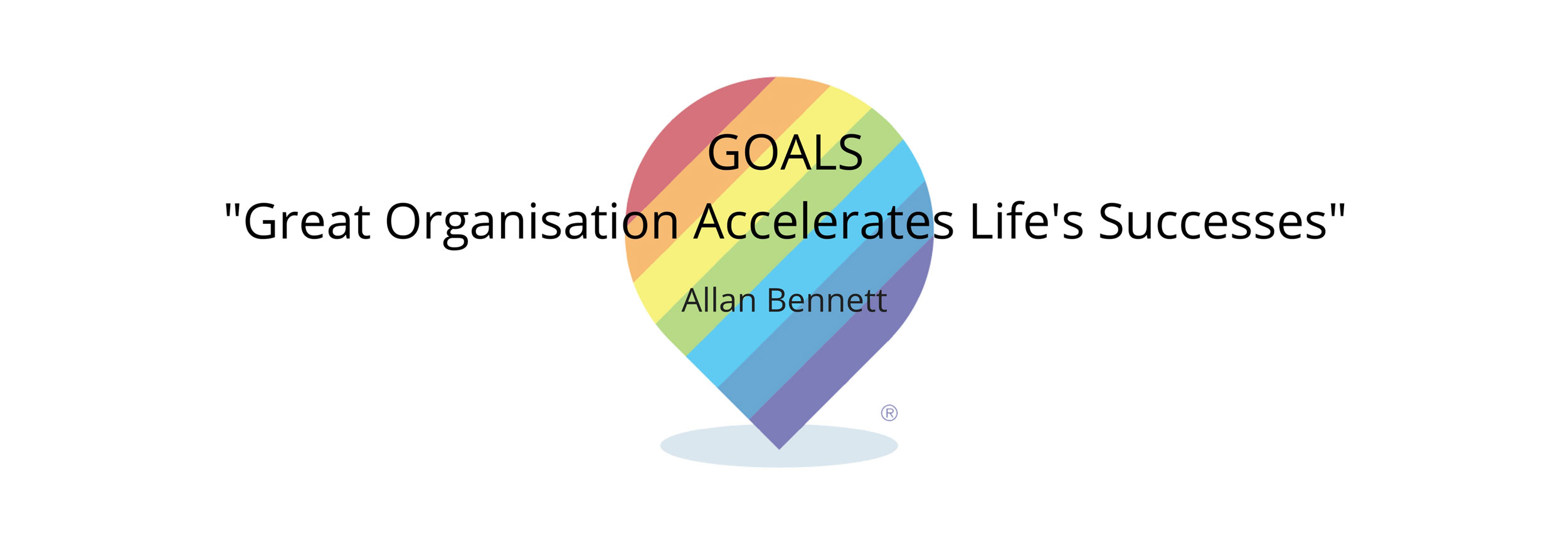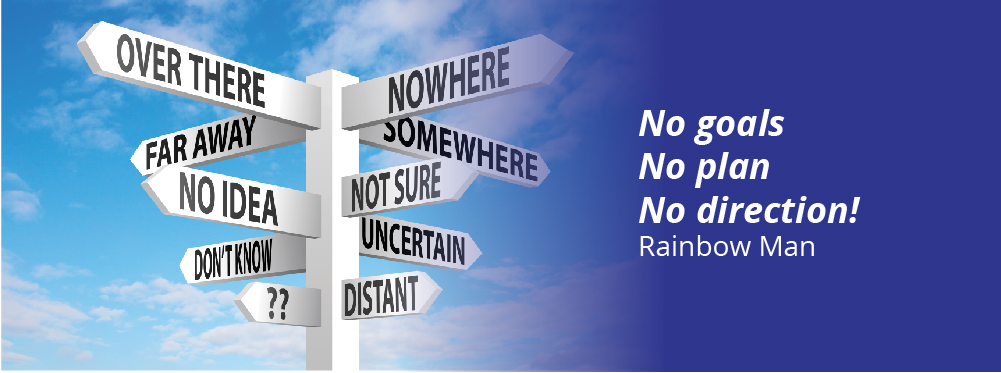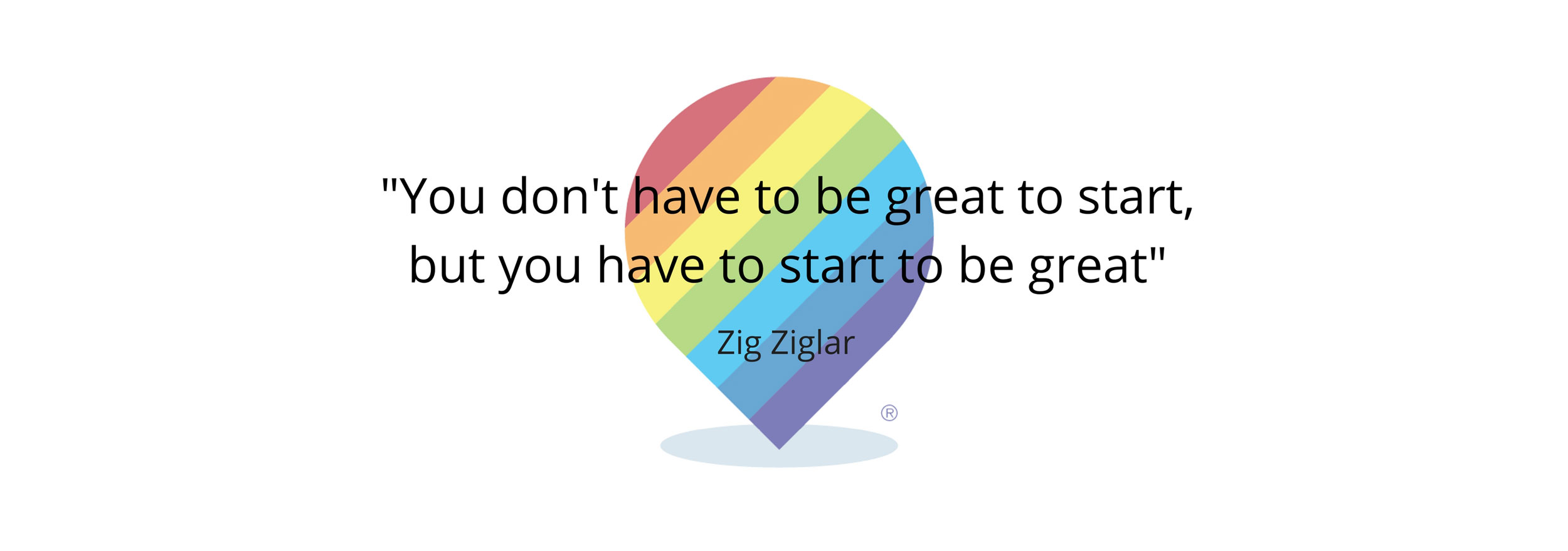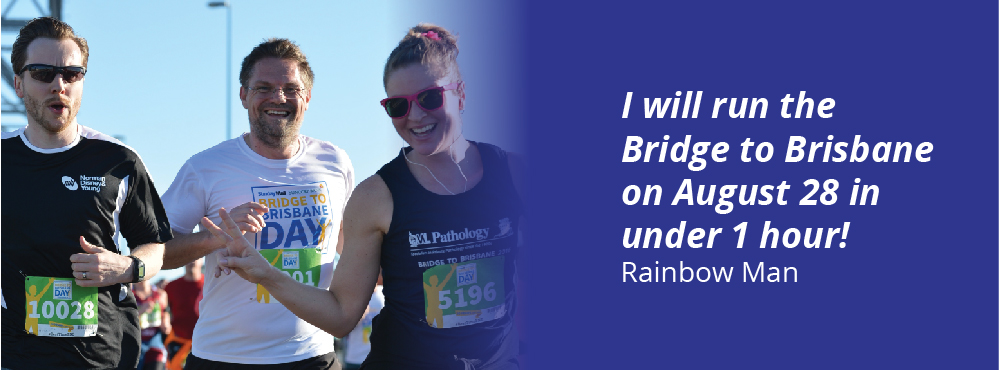The Nurture stage of the Success Generator has taken you on a journey. You should now have a better understanding of yourself and what motivates you. That knowledge enables you to move forward purposefully as you push through the grey clouds. As you do so, you move up and over into a brighter, more promising place, where you should find some Clarity.
Clarity is where you gain a clearer understanding on where you are now and where you want to be in life. Activate Your Goals is the first step to find Clarity, so lets begin by understanding a little more about goals.

Goals originate from your dreams. When you take action to make your dream come true, it means your dream has become more than just a dream. It means it is a goal, something specific you desire to have or something you want to achieve. Setting a goal is confirmation that you firmly believe you can make your dream a reality.
Milestones are an important, integral part of a goal. They break a goal down into smaller, more manageable steps. They are essentially, mini goals within the main goal. They act as easier targets to work towards and achieve. For simple goals, you may only need 3 to 5 milestones to achieve your main goal. More complex goals may require more.
You learnt in defining your dreams, that before you begin the process of setting your goals, it is important to gather as much information as possible. This will ensure you have a clearer understanding of what’s required to fulfil your dream. Having clarity around this will enable you to set achievable goals that are structured with the correct milestones.

It is suggested that the majority of people do not set goals. They have many thoughts and ideas floating around in their heads, but many may not define or document what they are. As a result, many risk meandering along in life, reactive to external factors that keep on impacting their lives. They will not realise where they are heading. They may lack focus with no real sense of purpose.

It could be argued that the most successful people in the world are those that have a goal setting strategy. As a result, they have clarity, they have direction and from my own experience, I know they have more control over their lives.

It is a simple question! Do you want to be part of this ambitious group, OR just be part of the majority, who may not be living life to their highest potential?
Setting milestones is an important exercise to do because it means you are putting real thought into understanding what your goal means. They help to give you more clarity of what you need to do to successfully achieve it. Setting milestones can mean you are more likely to get to the end goal because you can see where you are at, know where you are heading. More importantly they also give you the opportunity to celebrate success as you reach a milestone along the way.

There are some things to consider before you begin. Ask yourself the following questions:
1. Do you have too many things you want to aim for?
It’s wise to focus on one or two small goals, especially when you are setting goals for the first time. Attempting too many goals at the same time can impact your ability to keep focus. I don’t want you to blur your vision so try focusing on one or two initially.
2. Is the goal simple or complex?
So you want to be an astronaut! That’s a great goal to have! But are you aware of what’s involved in becoming an astronaut? Clarity is about understanding your goal well to help make it easier for you to achieve. Remember we want you to succeed!

3. How long will it take to achieve the goal?
I have already touched on the need for you to identify if you feel your goal is achievable in the short (0 to 1 year), medium (1 to 3 years) or long-term (3years+).
As we have seen in the previous points short term goals may be simpler. However, there is nothing wrong with having a long-term goal. For example, if you found yourself with a 4-year goal, try this solution. It may be helpful to break the big goal into 4 smaller goals, one for each year. Each yearly goal would build on the previous goal and each yearly goal would contain specific milestones towards which to work.
After considering these important points, the next thing is to ensure your goal is clearly thought through so it is achievable. The SMART principle is an invaluable tool made up of five principles that can help keep you focused and guide you when you formulate an achievable goal.

SMART’ stands for; ‘Specific, Measurable, Achievable, Realistic and Timely’, and this means your goals needs to be:
SPECIFIC
Can you clearly and simply express what you want to achieve?
It needs to be clear, simple and direct. Avoid broad or open-ended goals.
MEASURABLE
How will you know you’ve accomplished your goal?
What measure will you use to determine that? How you measure may depend on your goal. The measurement may be related to time, speed, quantity or a date.
ACHIEVABLE
Are you willing to put the necessary focussed effort in to succeed?
Will it fall in to the too hard basket when you have to really work for it?! This is why learning about your goal is very important. You need to push yourself out of your comfort zone, but not so far that you do not give yourself the ability to succeed.
REALISTIC
Do you have the necessary influence over, and capacity to stretch yourself, to fulfil your goal? Make sure your goal is realistic! Your goal shouldn’t stifle your ambition, but at the same time it needs to be something you can own, drive and act on.
TIMELY
Can you apply a timeframe around your personal goal?
Having a future achievement date gives some urgency to the journey. However, be mindful to keep timeframes realistic and flexible, so you don’t stress yourself unnecessarily!
One of my goals is to run the Bridge to Brisbane every year. It’s Queensland’s largest charity fun run. Using the SMART principle, this is my goal for last year’s race.

Let’s take a look to see how the SMART principle is built into this goal:
| Specific |
I will run the Bridge to Brisbane fun run. |
| Measurable |
I will run 10 km in under 1 hour. |
| Achievable |
I have 6 months to train and prepare for the run. |
| Realistic |
My running time last year suggests I can do this. |
| Timely |
The race is on August 28. The run is not next week!! |
In this example, the goal is specific, it can be measured, its achievable and realistic. It’s also timely because I have a clear date when I will achieve my goal, which gives me enough time to train for the event.
If a goal is not written following this principle it is possible to have a goal that you may never achieve.
When you write your milestones it is important to keep them simple and include something that will help you measure your achievement. Each task should also have a target date for completion.
In the example of my fun run, I realised I needed to improve my running time to meet my goal of completing the run in under 1 hour. My milestones were about setting targets to improve that time and achieve my goal.
| Run 5 km without stopping in under 35 mins |
April 30 |
| Run 7.5 km without stopping in under 50 mins |
May 30 |
| Run 10 km without stopping in under 70 mins |
June 30 |
| Run 10 km without stopping in under 65 mins |
July 30 |
| Run 10 km without stopping in under 60 mins | August 28 |
Once you have set your goals and milestones there is just one more thing to do. The Goal Stress Test! This is a simple test that allows you to reflect on your goals. It’s also the final check to confirm you are comfortable with your goals and milestones you have set for yourself.

The Goal Stress Test works in this way:
If you answer YES to all the questions below it may indicate that your goal is sound, you are on your way and it’s time to take action!! If you answer NO to any question, that is OK, but perhaps you may need to take a moment to go back and check that you are on track and the goal is SMART.
By activating your goals, you should feel even more confident in the direction you are heading. The sun should be starting to filter through the grey clouds, your rainbow will be forming and your pot of gold is becoming clearer.

Visit the Action Hub for guidance on how to set your goals in Manage My Rainbow.
Further Clarity can be achieved by creating a vision board. They are an inspiring, fun and creative way of envisioning your goals. So, let’s explore how you can energise your vision, bringing greater clarity and focus to what you want to achieve.
